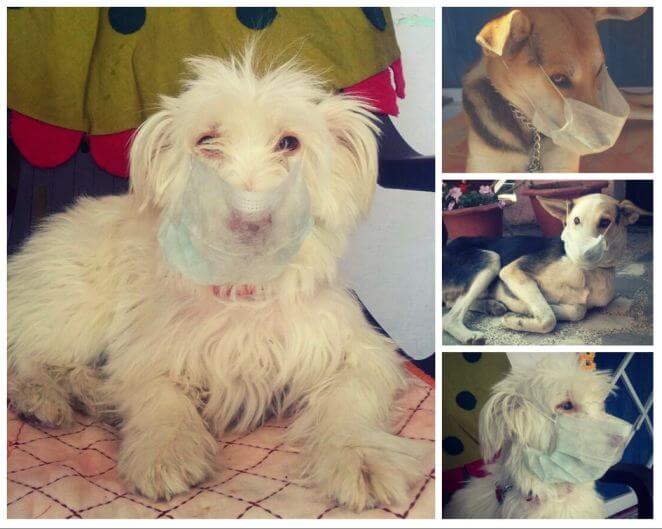The air we breathe hasn’t ever been this dangerous and deadly. The children, elderly and pets are bearing the severest sting of air attack. In this blog post, we explore how to protect your dog from air pollution.

The times they are a changin‘. Never in the history of mankind was our precious blue planet at the brink of such catastrophe. All that’s vital being denigrated at a pace faster than what the technological advancements could match.
The adverse effects of pollution on dogs, cats and other pets can be lethal since they’ve a heightened sensitivity to foreign particulates. Animals in urban areas are at particular risk of smog and exhaust pollutants, while those in rural areas run the risk of exposure to toxins sprayed as insecticides, fungicides or herbicides.
“The world has changed. I see it in the water. I feel it in the Earth. I smell it in the air. Much that once was is lost, For none now live who remember it.”
― J.R.R. Tolkien, The Lord of The Rings
How Does Air Pollution Affect Pets?
The smog that engulfs our cities has reached alarmingly new levels – industrial wastes, Diwali crackers, crop burning etc. are all leading to it. The air toxins are raising grave dangers for strays in particular. The constant exposure to toxic air has seen a rise in respiratory illnesses in cats and dogs – asthma, nose and threat illnesses and bronchitis.

- Pets can contract allergies and other respiratory issues due to the amount of smoke and pollutants in the air.
- Burning of crackers, crop burning, waste-burning leads to the respiratory diseases in humans and animals alike.
- Cats and dogs may suffer from seizures due to inhalation of toxins – car exhaust, industrial pollution or lead poisoning.
How to protect your dog from air pollution?
- Indoor plants like – Areca Palm, Anthuriums, Money plant, Spider plant, golden pothos, bamboo plant, ‘Song of India’ and Boston ferns act as natural air-purifiers and are safe for cats and dogs.
- Air purifiers or air-conditioners help circulate the fresh air supply.
- Avoid smoking indoors (outdoors too, if you take this dog’s word) as it increases the risk of developing respiratory infections.
- If your dog shows any signs of respiratory problems please take him to a vet at the earliest.
- Be Air Aware by staying informed about the air quality in your area. On days with poor air quality, try indoor exercise sessions for your dog.

Try making your pet a comfortable mask when you take him out on days which have high PM. - Try and pick the times of day when the air is a little bit better. You may check your area’s Air Quality Index (AQI) – and accordingly plan your dog walks.
- Avoid exercising your pets in high-traffic areas.
- For home cleaning try using natural preparations that use white vinegar, baking soda and essential oils, rather than mainstream chemical solvents.
Here’s hoping that these little measures help you keep your pet from harm’s way. After all it is not the humans alone who are paying the price for pollution but the innocent animals too.

Informative post, brother!
I came across studies recently that show that pets living with smokers may face greater risks than their owners, due to the considerable amount of time spent near the floor.